Chernobyl 2011
Hi all,
Summary of our last trip to Chernobyl (one third of the entire report):
LENIN LIVES FOREVER
Details. Indeed, it is the details that are most important. Often missed by people visiting the zone for the first time. The lack of time doesn’t allow them to stop for a moment to reflect and meditate. The constant rush means they often take thousands of pictures at random, trying to capture more than what time allows. They naively believe that they will look at everything calmly after they return. But this isn’t the case. In this way they remember the place exclusively as a collection of empty images that don’t say anything.
A large amount of time is spent on considering history, the intention of the places visited and the objects found there. This makes it possible to notice details. Makes it possible to find them in the visited places and buildings and conversations with inhabitants. Thanks to them it is possible to notice things which are a wider background of the whole tragedy, without which the lives of the inhabitants would take on a completely different course or appearance.
Ideology. Ideology which had a huge influence not only on the lives of the inhabitants of Prypiat themselves, or the whole of the Soviet Union, but also Poland. This is the ideology co-founded by Vladimir Lenin. His thoughts and actions on abolishing oppression, class division and social exploitation. Establishing social control, common property and equitable distribution of wealth. Thanks to his ideology, Lenin became a legend even in his lifetime. And thus we return again to Prypiat.
Lenin is the most numerous inhabitant of Prypiat. He is everywhere. His pictures, images, drawings are found on the walls of all government and cultural institutions. Offices, factories, cinemas, theatres, schools and kindergartens. Photographed and drawn by adults and children alike. The figure for whom statues were built, songs and poems were written. Awarded with medals and orders in his name. Schools, squares and even a city were named after him. It is no surprise that after Lenin's death the party rulers decided to take advantage of his popularity and authority as an element of propaganda of the system. In Prypiat as well.
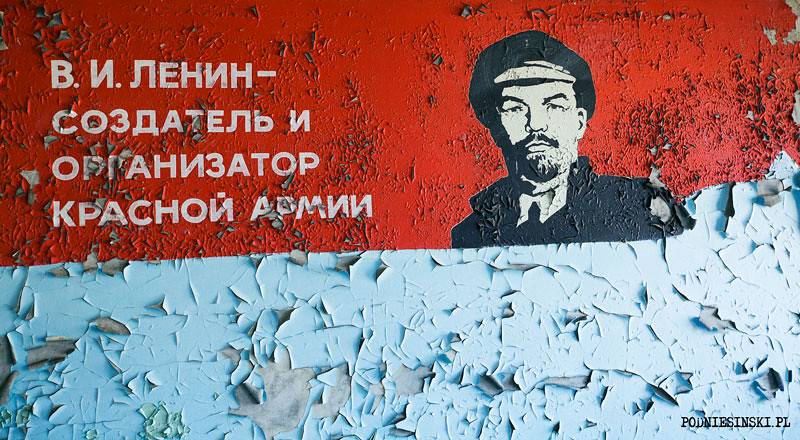

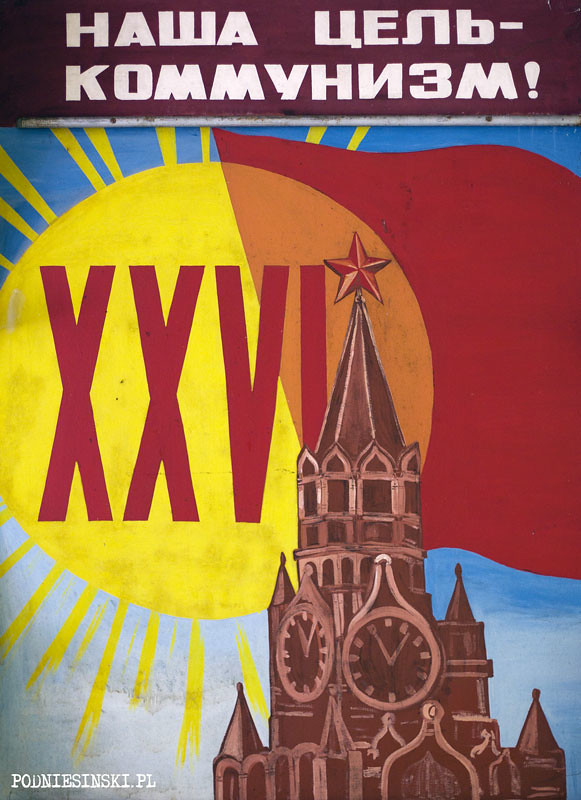

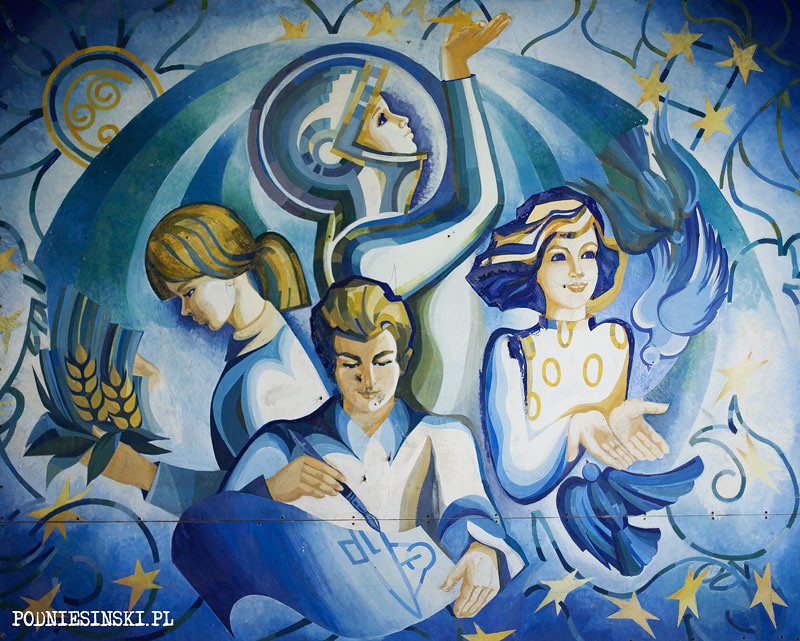
YOU HAVE TO DISCOVER EVERYTHING FOR YOURSELF
Looking for traces of communist ideology and propaganda and meeting with former residents was not the only goal of this last trip.
POST OFFICE
Basically this is a telecommunications centre located right in the centre of town with a post office, telephone and telegraph exchanges and public telephones. It seemed less interesting because it was devoid of any equipment, objects. Visited by hundreds of one-day tourists, it was effectively “cleansed” of any interesting items. The only thing remaining is thousands – or more precisely – kilograms of less interesting documents, receipts and blank forms. Scrap paper.
“Maybe this is why I had never found anything interesting there”, I thought, visiting this place once again. However, this time I decided to search deeper. And it paid off. Having put in a little time and energy, I found several real curiosities; objects which should already be long gone. Completely new, clean postcards. Even whole packets. In packages of 50 pieces bound with nylon string...

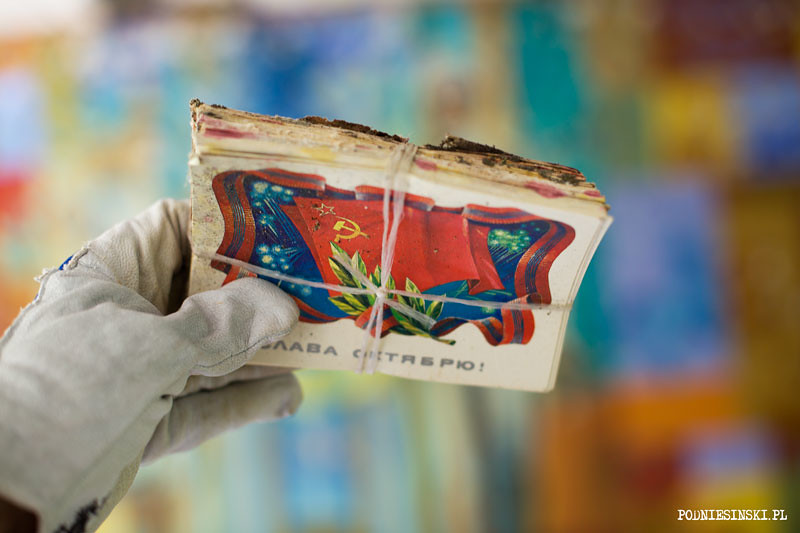
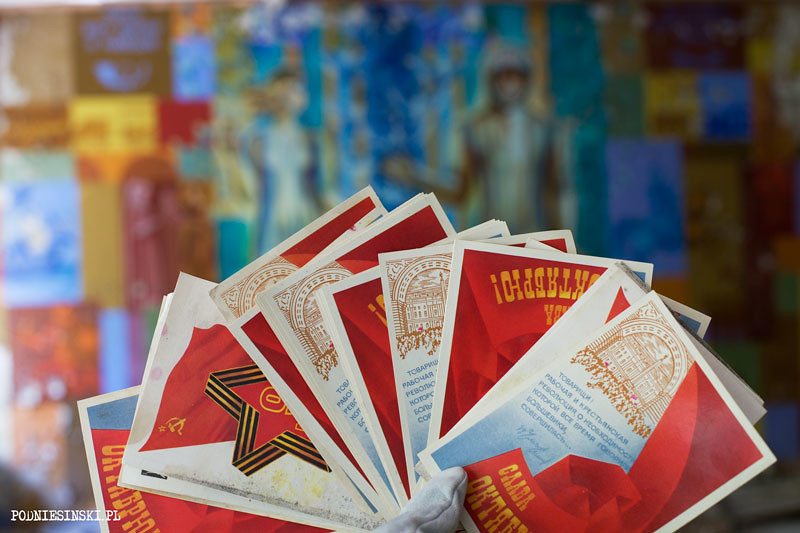

When you read this report, the cards will definitely not be there anymore. Left in an obvious place, they irretrievably disappeared into the pockets of hundreds of visiting tourists…
FLAG DAY
Duga. The over-the-horizon radar colloquially known as the Moscow Eye. It is rarely possible to visit it thoroughly. Often changes in management of the zone effectively hinder or just make getting the right permits impossible. Every new manager of the zone equals new rules, new limits and new fees. Always higher. This time good luck prevailed. Thanks to a previous worker of this complex, the gate stood open before us. Thanks to his help, the huge radar complex and surrounding buildings which served it once again started to reveal their secrets.

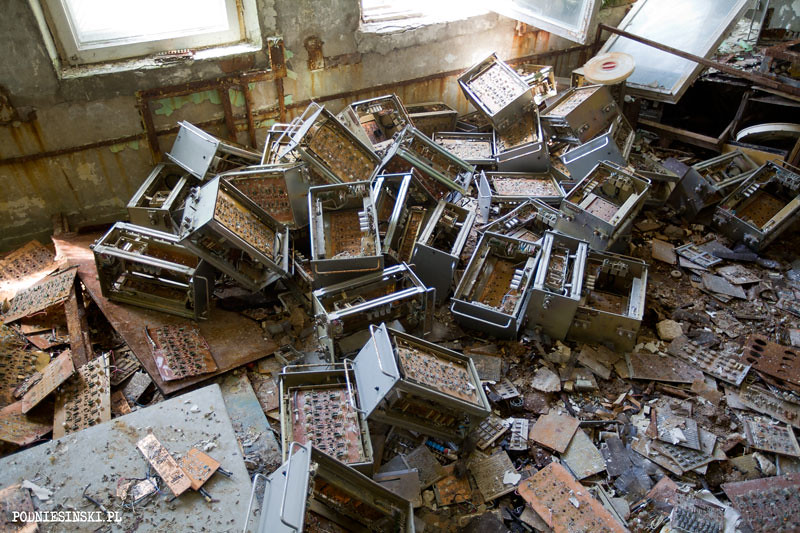

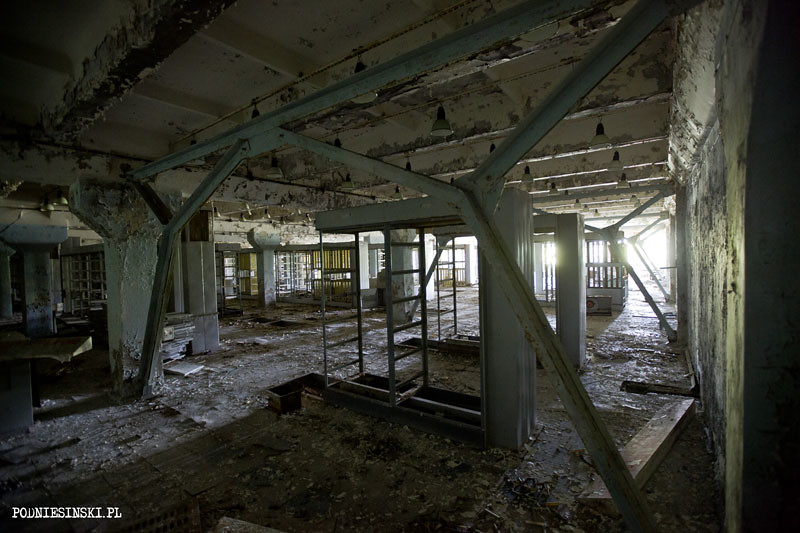
One of these secrets is the future of the radar. Rumour had already circulated that the radar would be taken apart for scrap. Even below the antenna itself, the smaller one, you can find cut off bits of the structure. It seemed that this unique structure that is truly beautiful in form was going to disappear forever. But it turns out this is not the case. Two independent sources have confirmed that the radar was sold (or is going to be at any moment). To the Japanese. Fortunately not for scrap. The structure was purchased with the intention of putting a telecommunications antenna at the peak. A decision worthy of praise. It has finally been decided to save one of the most interesting structures that is unique on a world scale.
This time, I climbed to the top of the antenna once again to finally hang something I had carried with me on the last several visits, waiting for the right occasion. Soon the white flag with the red sun will fly here…But today is the day of the Polish flag.
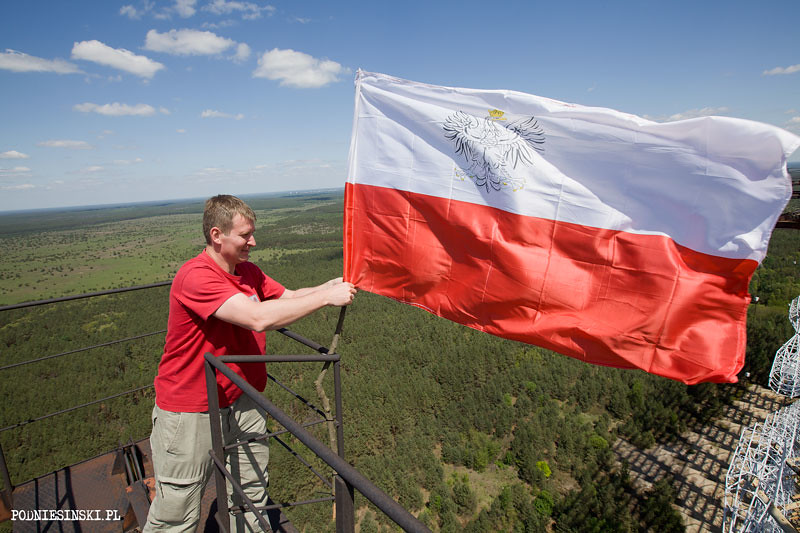

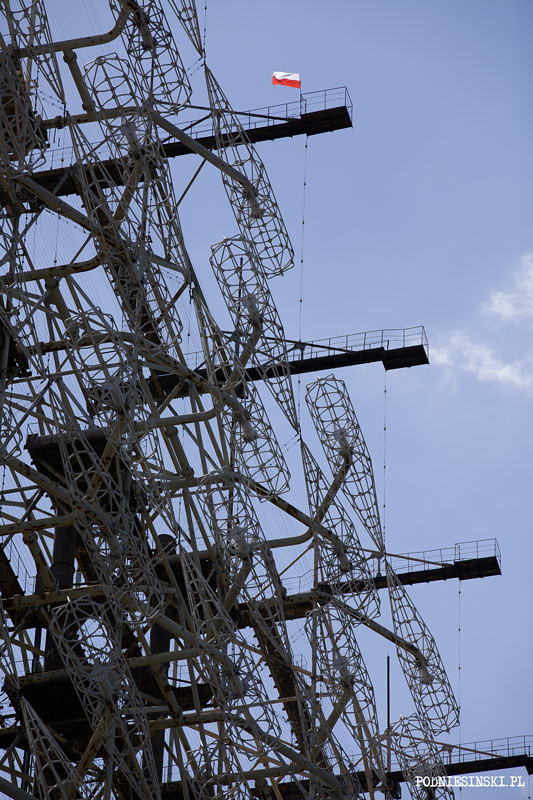

TO THE GLORY OF THE FATHERLAND
Who would have thought that it would be possible to find a shooting range in Prypiat, and in the basement of an elementary school at that. It turns out that the zone has many secrets and is still capable of surprising.
But the shooting range is just a part of a certain ideological whole whose meaning is explained only after finding the room next to it. A small hall inside in which there are two rows of closely placed benches and at the end, by the wall, a board. On both sides of it hang bright red propaganda posters. This is the hall where civil defence training was taught. The hall in which young Russian patriots were educated.
Here the students of higher grades took part in lessons in civil defence, methods of defence against military threats and providing first aid. Information on military themes was also in the teaching program; information on types of weapons, rules of military service and topography was given. And in the scope of practical lessons – shooting lessons.
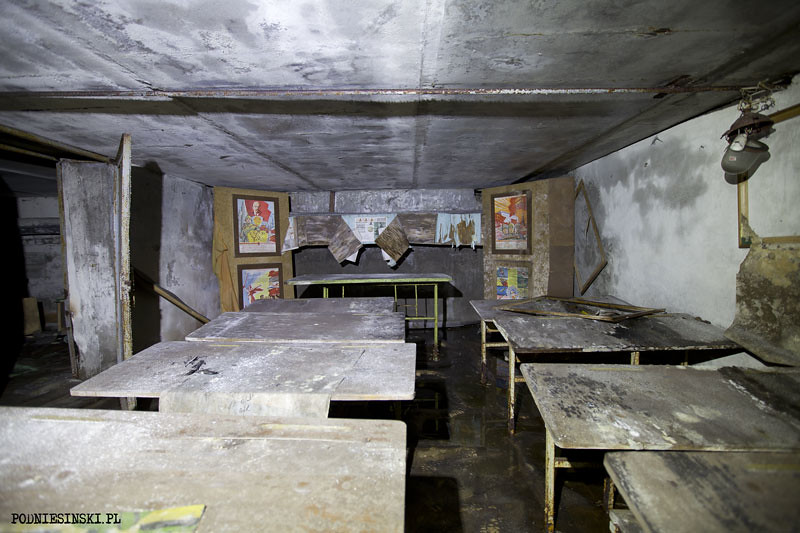
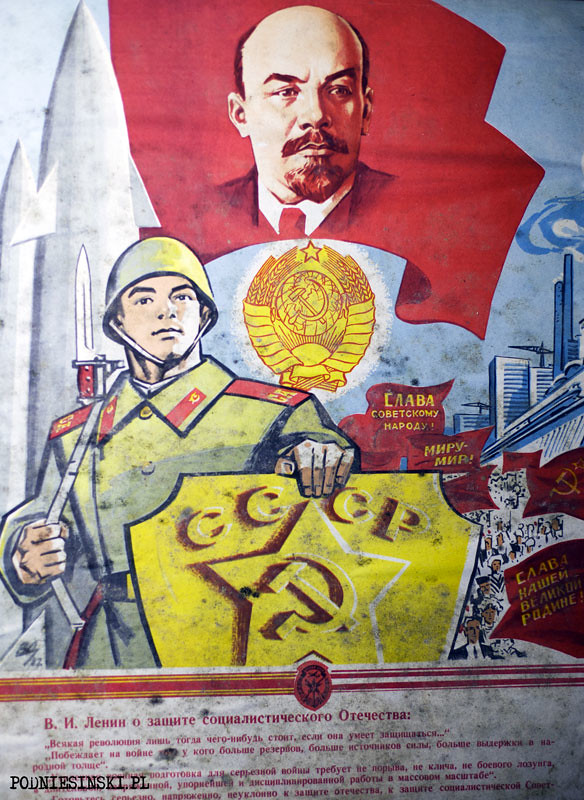
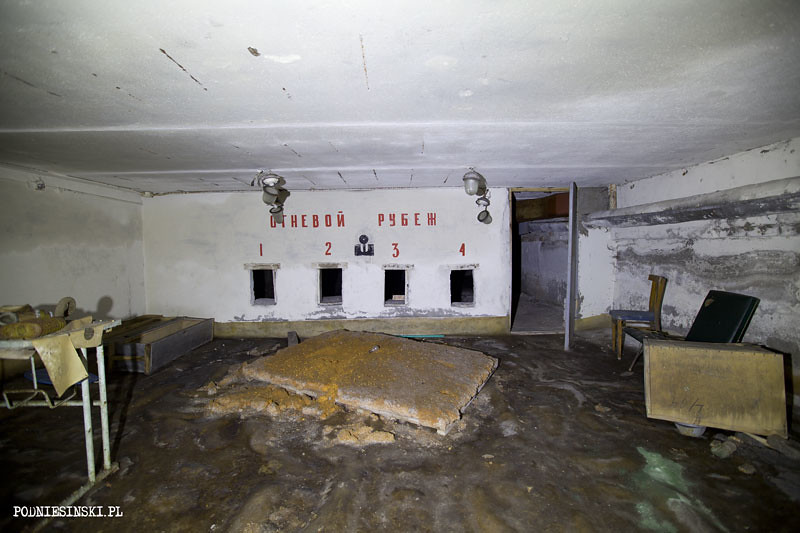
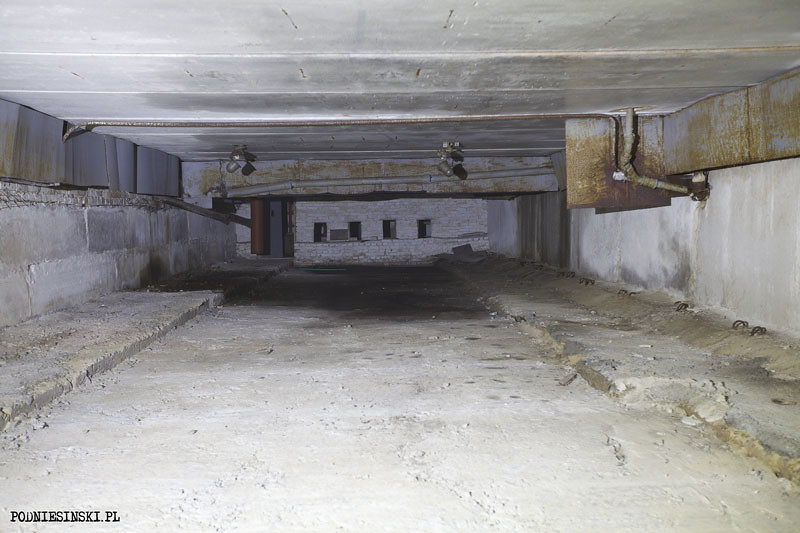
MUSIC IS THE NECESSITY OF NATIONS
Vladimir Lenin believed that literature and art could be used for educational purposes as well as political and ideological. His political successors continued his work, lavishing thoughtful care on thousands of soviet talents – poets, singers, actors, musicians and painters. They built many cultural institutions for them, in Prypiat as well - houses of culture, music schools, cinemas and theatres. The effect can still be seen in the many abandoned musical instruments, the biggest of which are in the best shape. Pianos and grand pianos. Large and heavy. Difficult to transport out and sell, they have become a valueless object for thieves.

Remaining quiet for 25 years. Dusty, yellowed, often not making a sound. Left to time and damp they are falling into ruin. I found several dozen of them and still find new ones. Just like this time when, going through a part of town I wasn't familiar with yet, I happened upon a store. A store where pianos were sold.
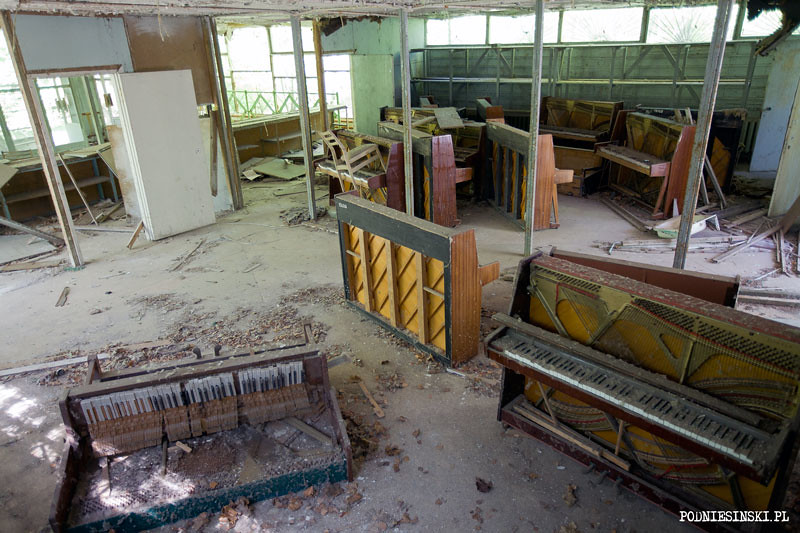
TURBINE HALL
I had already visited blocks 5 and 6 of the nuclear power plant, I thought. That’s why this time I am also checking the buildings adjacent to them. One of these, the largest, is the turbine hall. Several hundred metres long, 2 turbogenerators of 500 MW capacity and numerous auxiliary machines were located here. Inside the hall the temperature immediately falls by a dozen or so degrees and I began to be able to see my breath. Darkness. The tanks and acetylene burners scattered around led to the assumption that not much remained here. Nearby, a white metal board informs: “Turbine hall. Energy block no. 5 – construction completed January 1986”. At the other end of the hall there are larger machines, e.g. a condenser, that are still in one piece.
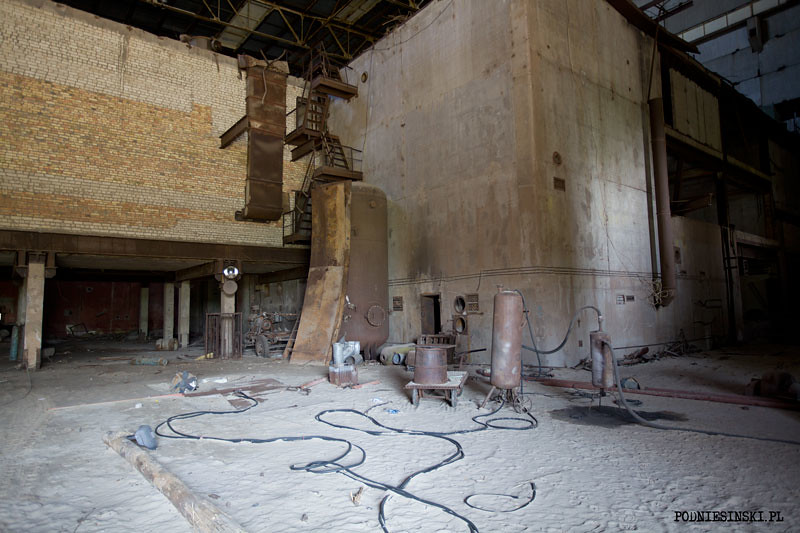
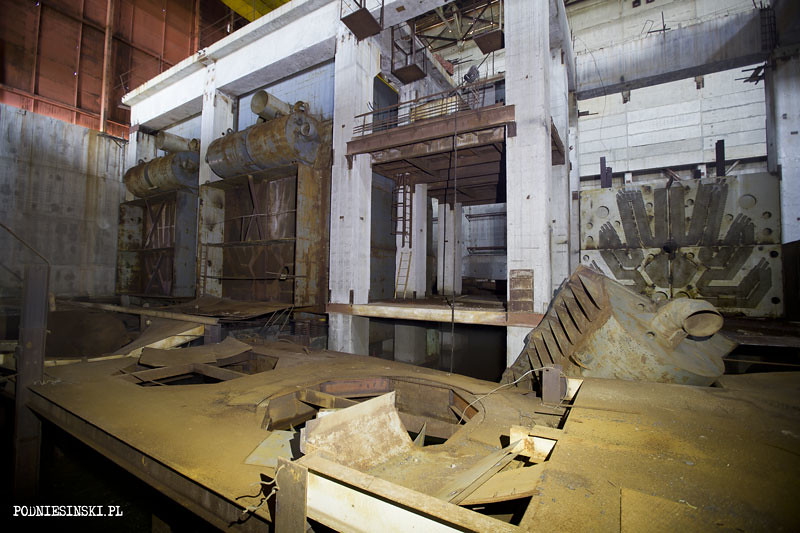

FULL REPORT: HERE
PREVIOUS REPORTS:
http://www.podniesinski.pl/portal/?p=3130
http://www.podniesinski.pl/portal/?p=2498
http://www.podniesinski.pl/portal/?p=2395
http://www.podniesinski.pl/portal/?p=2252
Summary of our last trip to Chernobyl (one third of the entire report):
LENIN LIVES FOREVER
Details. Indeed, it is the details that are most important. Often missed by people visiting the zone for the first time. The lack of time doesn’t allow them to stop for a moment to reflect and meditate. The constant rush means they often take thousands of pictures at random, trying to capture more than what time allows. They naively believe that they will look at everything calmly after they return. But this isn’t the case. In this way they remember the place exclusively as a collection of empty images that don’t say anything.
A large amount of time is spent on considering history, the intention of the places visited and the objects found there. This makes it possible to notice details. Makes it possible to find them in the visited places and buildings and conversations with inhabitants. Thanks to them it is possible to notice things which are a wider background of the whole tragedy, without which the lives of the inhabitants would take on a completely different course or appearance.
Ideology. Ideology which had a huge influence not only on the lives of the inhabitants of Prypiat themselves, or the whole of the Soviet Union, but also Poland. This is the ideology co-founded by Vladimir Lenin. His thoughts and actions on abolishing oppression, class division and social exploitation. Establishing social control, common property and equitable distribution of wealth. Thanks to his ideology, Lenin became a legend even in his lifetime. And thus we return again to Prypiat.
Lenin is the most numerous inhabitant of Prypiat. He is everywhere. His pictures, images, drawings are found on the walls of all government and cultural institutions. Offices, factories, cinemas, theatres, schools and kindergartens. Photographed and drawn by adults and children alike. The figure for whom statues were built, songs and poems were written. Awarded with medals and orders in his name. Schools, squares and even a city were named after him. It is no surprise that after Lenin's death the party rulers decided to take advantage of his popularity and authority as an element of propaganda of the system. In Prypiat as well.





YOU HAVE TO DISCOVER EVERYTHING FOR YOURSELF
Looking for traces of communist ideology and propaganda and meeting with former residents was not the only goal of this last trip.
POST OFFICE
Basically this is a telecommunications centre located right in the centre of town with a post office, telephone and telegraph exchanges and public telephones. It seemed less interesting because it was devoid of any equipment, objects. Visited by hundreds of one-day tourists, it was effectively “cleansed” of any interesting items. The only thing remaining is thousands – or more precisely – kilograms of less interesting documents, receipts and blank forms. Scrap paper.
“Maybe this is why I had never found anything interesting there”, I thought, visiting this place once again. However, this time I decided to search deeper. And it paid off. Having put in a little time and energy, I found several real curiosities; objects which should already be long gone. Completely new, clean postcards. Even whole packets. In packages of 50 pieces bound with nylon string...




When you read this report, the cards will definitely not be there anymore. Left in an obvious place, they irretrievably disappeared into the pockets of hundreds of visiting tourists…
FLAG DAY
Duga. The over-the-horizon radar colloquially known as the Moscow Eye. It is rarely possible to visit it thoroughly. Often changes in management of the zone effectively hinder or just make getting the right permits impossible. Every new manager of the zone equals new rules, new limits and new fees. Always higher. This time good luck prevailed. Thanks to a previous worker of this complex, the gate stood open before us. Thanks to his help, the huge radar complex and surrounding buildings which served it once again started to reveal their secrets.




One of these secrets is the future of the radar. Rumour had already circulated that the radar would be taken apart for scrap. Even below the antenna itself, the smaller one, you can find cut off bits of the structure. It seemed that this unique structure that is truly beautiful in form was going to disappear forever. But it turns out this is not the case. Two independent sources have confirmed that the radar was sold (or is going to be at any moment). To the Japanese. Fortunately not for scrap. The structure was purchased with the intention of putting a telecommunications antenna at the peak. A decision worthy of praise. It has finally been decided to save one of the most interesting structures that is unique on a world scale.
This time, I climbed to the top of the antenna once again to finally hang something I had carried with me on the last several visits, waiting for the right occasion. Soon the white flag with the red sun will fly here…But today is the day of the Polish flag.




TO THE GLORY OF THE FATHERLAND
Who would have thought that it would be possible to find a shooting range in Prypiat, and in the basement of an elementary school at that. It turns out that the zone has many secrets and is still capable of surprising.
But the shooting range is just a part of a certain ideological whole whose meaning is explained only after finding the room next to it. A small hall inside in which there are two rows of closely placed benches and at the end, by the wall, a board. On both sides of it hang bright red propaganda posters. This is the hall where civil defence training was taught. The hall in which young Russian patriots were educated.
Here the students of higher grades took part in lessons in civil defence, methods of defence against military threats and providing first aid. Information on military themes was also in the teaching program; information on types of weapons, rules of military service and topography was given. And in the scope of practical lessons – shooting lessons.




MUSIC IS THE NECESSITY OF NATIONS
Vladimir Lenin believed that literature and art could be used for educational purposes as well as political and ideological. His political successors continued his work, lavishing thoughtful care on thousands of soviet talents – poets, singers, actors, musicians and painters. They built many cultural institutions for them, in Prypiat as well - houses of culture, music schools, cinemas and theatres. The effect can still be seen in the many abandoned musical instruments, the biggest of which are in the best shape. Pianos and grand pianos. Large and heavy. Difficult to transport out and sell, they have become a valueless object for thieves.

Remaining quiet for 25 years. Dusty, yellowed, often not making a sound. Left to time and damp they are falling into ruin. I found several dozen of them and still find new ones. Just like this time when, going through a part of town I wasn't familiar with yet, I happened upon a store. A store where pianos were sold.

TURBINE HALL
I had already visited blocks 5 and 6 of the nuclear power plant, I thought. That’s why this time I am also checking the buildings adjacent to them. One of these, the largest, is the turbine hall. Several hundred metres long, 2 turbogenerators of 500 MW capacity and numerous auxiliary machines were located here. Inside the hall the temperature immediately falls by a dozen or so degrees and I began to be able to see my breath. Darkness. The tanks and acetylene burners scattered around led to the assumption that not much remained here. Nearby, a white metal board informs: “Turbine hall. Energy block no. 5 – construction completed January 1986”. At the other end of the hall there are larger machines, e.g. a condenser, that are still in one piece.



FULL REPORT: HERE
PREVIOUS REPORTS:
http://www.podniesinski.pl/portal/?p=3130
http://www.podniesinski.pl/portal/?p=2498
http://www.podniesinski.pl/portal/?p=2395
http://www.podniesinski.pl/portal/?p=2252
0
Comments
Photography Website
Photography Blog
Panaramio Site
Well done and thanks for sharing.
My Gear
Find me on Google+
http://www.facebook.com/profile.php?id=100003085685580